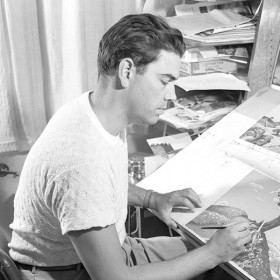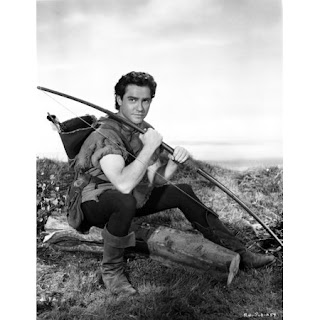On this day, in 1916, Hamilton Henry Gilkyson III was born in
Phoenixville, Pennsylvania. Known as Terry most of his life, he grew up in
a close knit family where, like many folks living through the Roaring Twenties
and the Great Depression, music formed the bulk of their entertainment. Terry
found it interesting enough that he became a music student at the University of
Pennsylvania. He chaffed under the structure of classwork, however, and dropped
out after two years. He then moved out to Tucson, Arizona in 1937 and began
working as a ranch hand on a friend’s big spread. In his spare time, he learned
how to play guitar and write folk songs. When World War II came to America, he
joined the United States Army, serving first in the cavalry then moving on to
the Army Air Corps. Following his discharge at the end of the war, Terry
returned to Pennsylvania, took over his father’s insurance company and got
married. But the siren song of a career in music proved too strong to resist.
In 1947, Terry and his new bride, Jane, relocated to Los Angeles,
California. In 1948, he landed his first professional music gig on Armed Forces
Radio as The Solitary Singer. The next year he recorded
The Cry of the Wild
Goose, a song he also wrote. A version sung by Frankie Laine became a hit
in 1950. Throughout the first half of the Fifties, Terry produced three albums
for Decca Records, sang two hits with a group called The Weavers (
On Top of Old Smoky
and
Across the
Wide Missouri), wrote another hit song for Frankie (
Tell Me a Story)
and began appearing in small roles in movies, frequently writing the music for
them as well. (1951’s
Slaughter Trail).
 |
| Image courtesy allmusic.com |
In 1953, he joined a group called The Easy Riders. The trio prospered in an
era of political uncertainty (damn you, Joe McCarthy!) by studiously avoiding
controversial topics, something most folk singers of the time (or any time
really) were unable to do.
The Riders released one song, Marianne, that went gold (meaning it sold over a
million copies) in 1957 and wrote the song
Memories
Are Made of This which became a hit for Dean Martin (with backing vocals by…
The Easy Riders!). Terry continued writing songs by himself throughout the
decade, creating several folk standards that would be recorded by Burl Ives,
The New Christie Minstrels and even Harry Belafonte. One of his last
compositions with the Riders would be
Greenfields, which became a hit for The
Brothers Four.
 |
| Image copyright Disney |
In the early Sixties, Terry dropped out of The Easy Riders and started
writing songs for the Walt Disney Company. Some of his work from this period
includes
My Heart Was an Island from
Swiss Family Robinson,
Savage Sam and Me from
Savage Sam (the sequel to
Old Yeller), Thomasina from
The Three Lives of Thomasina and the
title song from
The Moon-Spinners. In
1967, Terry wrote several songs for the studio’s 19
th animated
feature,
The Jungle Book, as did the Sherman Brothers. Only one of his actually
made it into the film (Walt felt most of them were too dark), but it’s the one everybody
knows and hums along with,
The Bare
Necessities. Terry’s song was also the only part of The Jungle Book to earn
an Oscar nomination, his one and only shot at an award (he lost to
Talk to the Animals from
Dr. Doolittle). His final contribution
to the company came in 1970’s
The
Aristocats with the song
Thomas O’Malley
Cat.
Following the success of his work in
The
Jungle Book and
The Aristocats,
Disney asked Terry to sign on with the company full time, instead of the
contract work he’d been doing up to that point. He was leery of the offer,
however, afraid that he would no longer have rights to his own songs. Rather
than accept, Terry chose to retire altogether. He spent the remainder of his
life watching his three kids build careers in the music industry. While
visiting family in Austin, Texas, he passed away on October 15, 1999. He was
83.








































